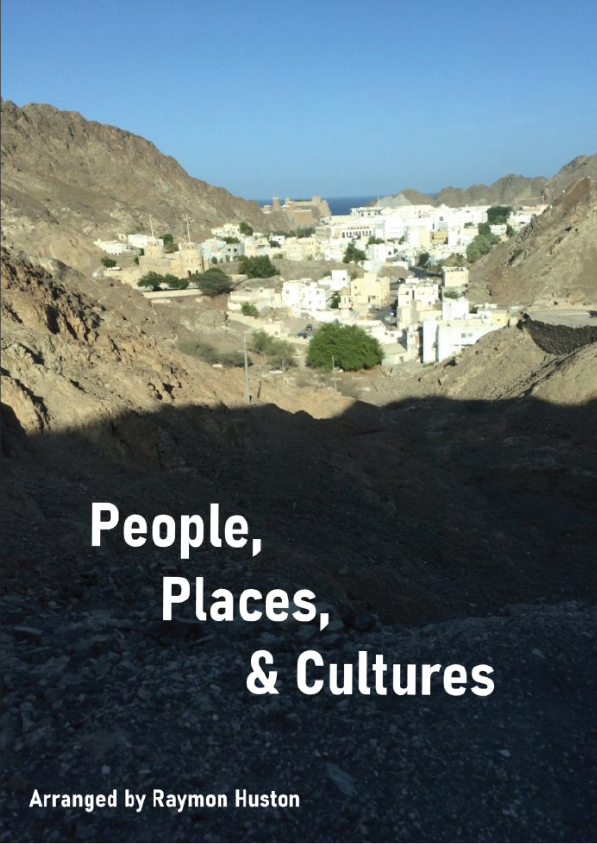Human geography emphasizes the importance of geography as a field of inquiry and introduces students to the concept of spatial organization. Knowing the location of places, people, and events is a gateway to understanding complex environmental relationships and interconnections among places and across landscapes.
Geographic concepts emphasize location, space, place, scale of analysis, pattern, regionalization, and globalization. These concepts are essential to understanding spatial interaction and spatial behavior, the dynamics of human population growth and migration, patterns of culture, political control of territory, areas of agricultural production, the changing location of industry and economic development strategies, and evolving human settlement patterns, particularly urbanization. Geographers use geospatial technology (e.g., satellite imagery, aerial photography, geographic information systems (GIS), global positioning systems (GPS), and drone technology), spatial data, mathematical formulas, and design models to understand the world from a spatial perspective better.
Human geography enables us to consider the regional organization of various phenomena and encourages geographic analysis to understand processes in a changing world. For example, geographic perspectives on the impact of human activities on the environment, from local to global scales, include effects on land, water, atmosphere, population, biodiversity, and climate. These human ecological examples are inherent throughout the discipline, especially in topics dealing with population growth, agricultural and industrial practices, and rapid urbanization. Geographers apply geographic methods and geospatial technologies to a variety of situations.
Geography as a Body of Knowledge
Geography seek to answer the “where,” “why,” and the “how.” Simply knowing where a country is located is undoubtedly helpful, but geographers dig deeper:
- Why is it located there?
- Why does it have a particular shape, and how does this shape affect how it interacts with its neighbors and its access to resources?
- Why do the people of the country have certain cultural features?
- Why does the country have a specific style of government?
- How do we analyze patterns in human-environment interactions?
The list goes on and on, and as you might notice, incorporates a variety of historical, cultural, political, and physical features. This synthesis of the physical world and human activity is at the heart of the regional geographic approach.
The term “geography” comes from the Greek term geo- meaning “the earth” and – graphia meaning “to write,” and many early geographers did exactly that: they wrote about the world. Ibn Battuta, for example, was a scholar from Morocco and traveled extensively across Africa and Asia in the 14th century CE. Eratosthenes is commonly considered to be the “Father of Geography,” and in fact, he quite literally wrote the book on the subject in the third century BCE. His three-volume text, Geographica, included maps of the entire known world, including different climate zones, the locations of hundreds of different cities, and a coordinate system. This was a revolutionary and highly regarded text, especially for the time period. Eratosthenes is also credited as the first person to calculate the circumference of the Earth. Many early geographers, like Eratosthenes, were primarily cartographers, referring to people who scientifically study and create maps, and early maps, such as those used in Babylon, Polynesia, and the Arabian Peninsula, were often used for navigation. In the Middle Ages, as academic inquiry in Europe declined with the fall of the Roman Empire, Muslim geographer Muhammad al-Idrisi created one of the most advanced maps of pre-modern times, inspiring future geographers from the region.
Geography today, though using more advanced tools and techniques, draws on the foundations laid by these predecessors. What unites all geographers, whether they are travelers writing about the world’s cultures or cartographers mapping new frontiers, is an attention to the spatial perspective. As geographer Harm deBlij once explained, there are three main ways to look at the world. One way is chronological, as a historian might examine the sequence of world events. A second way is systematical, as a sociologist might explore the societal systems in place that help shape a given country’s structures of inequality. The third way is spatially, and this is the geographic perspective. Geographers, when confronted with a global problem, immediately ask the questions “Where?” and “Why?” Although geography is a broad discipline that includes quantitative techniques like statistics and qualitative methods like interviews, all geographers share this common way of looking at the world from a spatial perspective.



